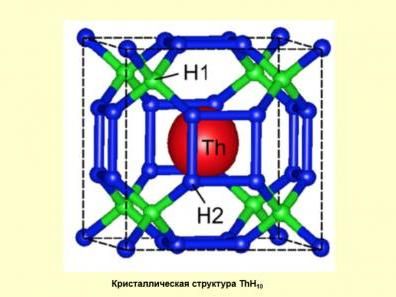Superconductivity can induce magnetism
Advertisement
When an electrical current passes through a wire it emanates heat . Some materials, at low temperatures, violate this law and carry current without any heat loss. But this seemingly trivial property, superconductivity, is now at the forefront of our understanding of physics. In Science, Andrea Bianchi, a professor in the Department of Physics at the Université de Montréal, and his colleagues show that, contrary to previous belief, superconductivity can induce magnetism, which has raised a new quantum conundrum.
Using the Swiss spallation neutron source (SINQ) of the Paul-Scherrer Institute (PSI) in Villigen, the international research group led by Michel Kenzelmann, a scientist at the Paul Scherrer Institute and professor at the Swiss Federal Institute of Technology Zurich, found a superconductor displaying two fascinating quantum properties. First, the material in the superconducting state shows magnetic order, which is a surprise given how superconductivity and magnetism cannot easily be accommodated in the same material.
Second, SINQ's experiments show that the electron pairs that form the superconducting state have a non-zero momentum, contrary to what is observed in all other known superconductors. Such a state has been theoretically predicted years ago, but it had never been microscopically detected.
The transport of electric current in a conductor is associated with the displacement of electrons: Collisions between these electrons and the crystal ions cause resistance and release heat. In superconductors below the transition superconducting transition temperature, the electrons are form pairs, which allow them, thanks to quantum mechanics, to synchronize their motion with the ions, and all occupy the same quantum state. Electrons in their normal state can be seen as rush-hour pedestrians in a public plaza, yet electron pairs are like couples waltzing to the rhythm of the music without colliding.
The electron has a charge, but like a tiny magnet, it also has a magnetic moment called spin. In a singlet superconductor, the electron pairs are formed by electrons of opposite spin, which cancels the pair's magnetic moment. But when the material is placed in a strong magnetic field, the spins are forced to orient themselves along the field, as the field acts on each spin individually. Usually, this breaks the pairs and destroys superconductivity. The magnetic fields inside a magnetically ordered material tends to act in the same manner and thus that superconductivity and magnetism tend to avoid each other, although they are not always mutually exclusive. According to Michel Kenzelmann, "Superconductivity and magnetism are like two groups of predators fighting over the same territory."
In the experiment reported in Science, the scientists cooled a single crystal of CeCoIn5 to a temperature of minus 273.1 degrees, close to absolute zero. To their great surprise, they discovered that magnetism and superconductivity coexist and disappear at the same time when they heat the sample or increase the magnetic field. This discovery is extraordinary, since magnetic order exists exclusively when this sample is in the superconducting state. In this unique case, magnetism and superconductivity do not compete with each other. Instead, superconductivity generates magnetic order.





























































